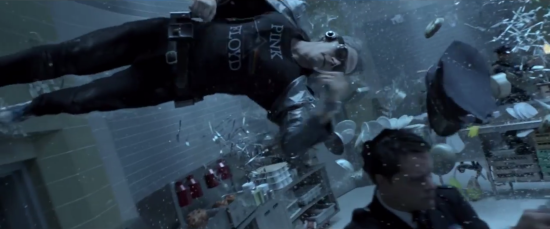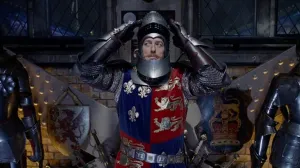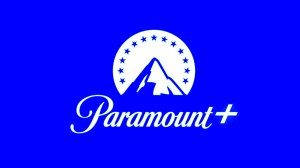Between FX Guide and THR, there’s an awful lot of discussion going on this week about the sequence in which Quicksilver had his first mission with the X-Men in last week’s X-Men: Days of Future Past.There’s a little bit of “how the sausage was made,” but it’s interesting stuff. FX Guide has not only a breakdown of how the stunts were done, but also a brief video showcasing the wind tunnel technology used in shooting Quicksilver’s scene.Meanwhile, Peters himself admitted that if you sat there in the theater thinking, “I wonder how many times he wiped out…” on account of all that running in the water in a room full of steel and tile, you weren’t far off.”I’m supposed to sprint to the other end of the room to prevent the bullets from hitting my friends — but there’s water all over the floor and I slip and fall — I just eat s–t,” Peters told The Hollywood Reporter.Regarding the actual rescue scene, which many have cited as a high point of the film, FX Guide had quite a bit to say. Here’s just a bit of it:
Videos by ComicBook.com
This is depicted in freeze-frame and slow-mo moments, with Quicksilver effectively moving at ‘normal’ speed amid water droplets from fire sprinklers, as well as flying food, bullets, cutlery and debris. Rising Sun Pictures crafted visual effects for the sequence under the supervision of Tim Crosbie.The kitchen sequence, in particular, made heavy use of techvis from The Third Floor in order to work out how much of the shoot could be achieved in-camera. “Richard Stammers was concerned we’d have to do a digital double for a lot of the sequence,” says Bonang, “but I think we figured out how to do most of it with just the actor which was incredible.””Casey Schatz also went to the set,” adds Bonang, “and tested the camera himself to see if we could pull it off with a live-action actor. We got all the measurements from the sets and made sure there was enough space to do everything as intended. We’d start building the set in previs and then put a previs camera in there and we’d see that something was obstructing what we needed to see, so we were able to tell the set designer that the design might need to change slightly.”The previs informed the filmmakers also as to the required photography set-up for slow motion. “We started with super slow motion 3D Phantom photography at 3200 frames per second,” explains Stammers, “so we could speed ramp to almost frozen and establish a live-action quality of the real sprinkler rain. We did substantial testing to hit the desired frame rate that ultimately was as fast as the Phantom could go while maintaining a 2K resolution. The stunt team also tested what would be effective to be seen at these speeds from self-punches to being hit by flying vegetables and air blasts. To maintain the light levels required for 3200 fps we used seven SoftSuns, which were integrated into the kitchen set build.”In ‘Quicksilver time’, that is, when everything in the air is virtually static, these elements were created in CG and so required only normal shooting speeds. That meant that practical stunts could be filmed with a rotating wire rig to position Quicksilver on the wall with a track behind him. “For the front on shots,” adds Stammers, “where we see Quicksilver on the wall, we shot him as a green screen element running on a treadmill. We used the stereo Phantom rig to get close-up shots shooting at 250 frames per second to get a nice movement of wind blowing in his hair and rippling his face. Despite blasting his face with wind and rain none of this water showed up on camera so all the rain hitting his face is added as CG which required very detailed facial roto animation and complex fluid sims.”









